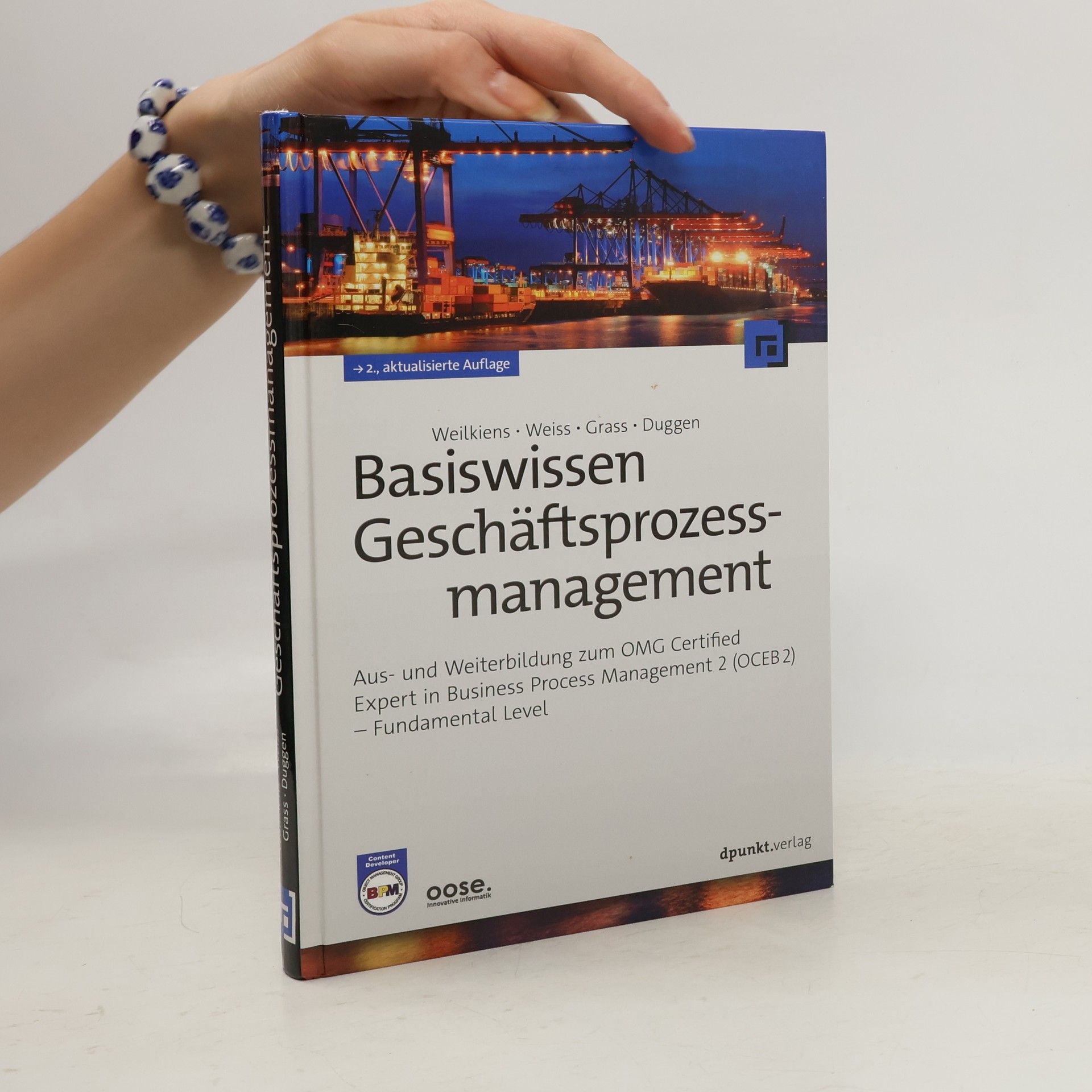Focusing on practical modeling, this book presents SYSMOD, a toolbox designed for Model-Based Systems Engineering (MBSE) that integrates seamlessly with SysML. It provides a comprehensive set of methods, detailing roles, inputs, and outputs, along with concrete modeling guidance. Examples illustrate the application of these methods, making it a valuable resource for practitioners looking to enhance their system modeling capabilities.
Tim Weilkiens Book order


- 2020
- 2015
Die Object Management Group (OMG) engagiert sich seit Jahren im Bereich des Geschäftsprozessmanagements. Sie ist hier verantwortlich für viele Standards, u. a. für die Business Process Model and Notation (BPMN), und das 5-stufige Zertifizierungsprogramm »OMG Certified Expert in Business Process Management 2« (OCEB2). Dieses Buch bereitet auf die Fundamental-Stufe von OCEB2 vor und behandelt grundlegende Themen des Geschäftsprozessmanagements und der Geschäftsprozessmodellierung mit BPMN: - Grundkonzepte der Betriebswirtschaft - Geschäftsprozesse - Geschäftsprozessmanagement - Unternehmensmodellierung - Geschäftliche Abläufe mit BPMN modellieren - Prozessqualität, Rahmenwerke und Vorgaben Im Anhang befindet sich eine Übersetzung der offiziellen Coverage-Map der OCEB2-Fundamental-Zertifizierung und aller verwendeten englischen Begriffe, ein Glossar sowie die Lösungen zu den Beispielfragen am Ende jedes Kapitels. Das Buch eignet sich nicht nur bestens für die Prüfungsvorbereitung, sondern dient Ihnen gleichzeitig als kompaktes Basiswerk zu diesen Themen. Die 2. Auflage berücksichtigt die aktualisierten und ergänzten Themen der OCEB2-Fundamental-Zertifizierung der OMG, insbesondere BPMN.